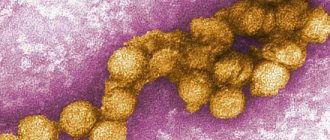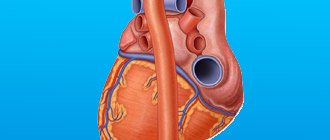Everyone is already tired of the coronavirus and another horror story has been launched in Moscow - the capital was attacked by West Nile fever. Social networks are sounding the alarm: according to townspeople, another mass death of birds is beginning in the capital - such that the corpses of birds cover the lawns almost like a continuous carpet. The cause of the pestilence is called West Nile fever. An ornithologist with whom MK consulted confirmed: although the disease is not new and has been known for a long time, there are practically no ways to protect birds - in 90% of cases they die. Rospotrebnadzor specialists on the official website of the department warned citizens of the country about a likely increase in the number of mosquitoes that carry West Nile fever. And off we go - social networks picked up the “news” - each new narrator adds fantasies to his retelling - one more terrible than the other... At the same time, the “experts” do not answer the questions: why in Moscow the number of tropical mosquitoes suddenly begins to increase with the onset of autumn cold weather, and the mass mortality of birds began only 4-5 months after the arrival of birds from the southern regions, etc. So after all, what is this new terrible beast that they scare us with - West Nile fever?
West Nile fever (WNF) is an acute infectious (viral) disease that occurs in humans in the form of an acute febrile illness with symptoms of general intoxication; in severe cases - with damage to the central nervous system (serous inflammation of the meninges, less often - meningoencephalitis and acute flaccid paralysis, which are often observed in combination). West Nile fever is a relatively rare zoonotic natural focal arboviral infection with a transmissible mechanism of transmission of the pathogen (blood-sucking insects and ticks). WHO Key Facts • West Nile virus can cause fatal neurological disease in humans. • However, approximately 80% of infected people do not have any symptoms. • West Nile virus is transmitted to humans primarily through the bites of infected mosquitoes. • The virus can cause severe illness and death in horses. • There are vaccines for horses, but there are no vaccines for humans yet. • The natural hosts of West Nile virus are birds. West Nile virus (WNV) can cause neurological disease and death in humans. WNV is commonly found in Africa, Europe, the Middle East, North America and Western Asia. In nature, WNV is maintained through a cycle involving transmission of the virus between birds and mosquitoes. People, horses and other mammals can become infected.
Transmission of infection
Infection in humans most often occurs as a result of the bites of infected mosquitoes. Mosquitoes become infected by feeding on the blood of infected birds; the virus circulates in their blood for several days. The virus eventually enters the mosquito's salivary glands. During its subsequent feeding on blood (during mosquito bites), the virus can enter the body of people and animals, where it can multiply and lead to illness. The virus can also be transmitted through contact with other infected animals, their blood or other tissues. A very small proportion of human infections occur through organ transplants, blood transfusions and breastfeeding. One case of transplacental transmission of WNV (from mother to child) has been reported. To date, there are no documented cases of person-to-person transmission of WNV through non-hazardous contacts and no cases of transmission of WNV to healthcare workers when standard infection control precautions are followed.
Pathogenesis
The mechanism of infection after the virus enters the bloodstream occurs along the path of hematogenous dissemination. As a result of viremia, the pathogen is detected in brain tissue. A tropism was revealed not only for neurocytes and cardiomyocytes, but also for vascular endothelial cells.
In response to infection, a perivascular lymphoid infiltrate is formed in the body. Neurocytes undergo dystrophy and necrosis. As a result of vascular damage, edema and swelling of the brain, local and generalized manifestations of thrombohemorrhagic syndrome are aggravated.
The virus is capable of long-term persistence in the human body. After the disease, persistent post-infectious immunity and no repeated cases have been recorded.
History and geography of the virus
West Nile fever virus was first discovered in the blood of a sick woman in 1937 in Uganda. Gradually, the population of Uganda and equatorial Africa developed immunity to the disease by the early 70s, however, by this time the virus had spread to other regions. Subsequently, data appeared on the widespread spread of the disease in other countries of tropical Africa and Asia. On the American continent, the first case of the disease was recorded in New York in 1999. The modern virus is most often found in Mediterranean countries (Israel, Egypt), and is recorded in France - on the Mediterranean coast and Corsica, as well as in India and Indonesia. Particularly frequent cases of the virus have recently been detected in the United States, and not only in the swampy subtropical regions of the country. Although the virus is persistently present in the swamps of the lower Mississippi, the largest outbreaks have been recorded in New York and the northwest of the country. Natural foci of the disease, as studies have shown, have long been present in the southern regions of the former USSR: Armenia, Azerbaijan, Moldova, Turkmenistan, Tajikistan, Kazakhstan; in Russia in the south of the European part and on the territory of the Omsk region, on the territory of Ukraine in the Odessa region. In Russia, a verified clinical diagnosis of West Nile fever was first made in 1999, so a more or less reliable estimate of mortality can be based on data from the 1999 epidemic outbreak in southern Russia and Kyrgyzstan: 492 serologically confirmed cases, mortality rate 7.32% [5] . The 2010 outbreak in the Volgograd region: as of October 5, 2010, 409 cases [6] (from 1999 to 2012, 59 people died from the consequences of the virus), Rostov region (Oblivskaya village - 100 cases, 5 deaths), Astrakhan region [7]. In 2013, 191 cases were registered in Russia in 16 regions, the mortality rate was 1.5%[8]. After the beginning of the development of mass tourism of Russians to regions where the disease circulates, it is increasingly being recorded in Russia, especially in the south, where the virus is more viable. Since 2008, a reference center for monitoring the causative agent of West Nile fever has been operating on the basis of the Volgograd Anti-Plague Research Institute.
From the Mediterranean to America
The first impetus for studying the range of West Nile virus was local outbreaks of the disease in Israel, registered in the mid-50s. last century.
It quickly became clear that the virus is widespread in Africa and is also found in southern Europe and Asia. Transmitted to humans through a mosquito bite, it causes a benign fever that ends with recovery after a few days.
Judging by the evolutionary tree, subsequently constructed on the basis of virological and genetic studies, WNV spread over large areas of three continents quite a long time ago, forming natural foci in ecosystems of various types. These strains of the virus did not pose a particular danger to humans and animals.
Today it is no longer possible to know what was the immediate cause of the appearance of a new genetic variant of the virus in the Mediterranean region. Most researchers agree that its history began with an outbreak in Algeria in 1994, when 50 cases of the disease were reported, with 8 people dying from severe viral encephalitis. The next outbreak was recorded two years later in Romania (453 cases with a mortality rate of about 9%). Unfortunately, these events did not attract much attention and actually remained outside the attention of scientists.
The West Nile virus came to dubious fame only in 1999, when it first came to Russia (Volgograd and Astrakhan) and, importantly, for the first time to the American continent. After that, it took him only three years to capture almost the entire territory of the United States and southern Canada. It took several more years to “conquer” Central and South America. Today, thousands of cases of severe illness caused by WNV are reported annually in the United States and Canada.
What about in Russia? Three years after the outbreak in the Volga region, the virus appeared in Western Siberia (southern Novosibirsk region). It was first discovered in migratory birds, but soon the first cases of human disease were identified. In addition, around the same time, the presence of the virus was registered in the Primorsky Territory (Ternova et al., 2007).
In fact, this meant that the “Mediterranean” virus, which had traveled almost around the world for several years, had spread widely throughout the world, capturing all inhabited continents except Australia.
Epidemiology
The carriers of the virus are mosquitoes, ixodid and argasid ticks, and the reservoir of infection is birds and rodents. West Nile fever has a distinct seasonality - from June to October, when conditions for the development of mosquitoes are most favorable. Interestingly, young people are more likely to get sick. Distributed mainly in tropical and subtropical regions, but after the start of mass tourism to these regions, it is increasingly recorded in non-tropics. The range of WNV in Russia covers landscape belts of deserts, semi-deserts, steppes, forest-steppes in the south of the European part, the southern regions of Siberia and the Far East. The climate warming trend is leading to changes in the living conditions of arbovirus vectors, which contributes to the expansion of the range of WNV. The virus primarily affects birds, but also people and many mammals (horses, cats, bats, dogs, chipmunks, skunks, squirrels, rabbits and others), which become infected after being bitten by mosquito vectors. The main source and reservoir of WNV are wild birds of the aquatic and semi-aquatic complexes. WNV is transmitted by mosquitoes of more than 60 species belonging to the genus Culex, and less commonly to the genera Aedes, Anopheles, Uranotaenia, Mansonia and others. Ixodid and Argasid ticks are also involved in the circulation of the virus and its preservation in natural foci. The persistence of WNV in vectors (mosquitoes, ticks) during the winter is one of the possible mechanisms for the existence of stable natural and anthropogenic foci of infection.
Viral Roulette
The genetic stability of WNV, unprecedented for flaviviruses, allowed us to say that the entire modern world “population” of this virus is actually the offspring of a single clone that originated in the Mediterranean Sea region.
It is obvious that it was changes in the nucleotide sequence of the virus genome that determined its unusual ability to infect a large number of species of mosquitoes, birds and mammals. But since the total genetic differences of the new strain from the previous ones are too small (no more than 5%), it has not yet been possible to identify those critical mutations that predetermined the current distribution of the virus in the natural ecosystems of various continents.
The deaths of polar bears from WNV reported in Canada show that the virus's potential to expand into new ecosystems is far from exhausted. It is possible that it can even reach Antarctica with migratory birds.
As mentioned above, a person is sensitive to a new genovariant of the virus. Most of the human diseases are registered in the second half of summer and autumn. The incubation period after being bitten by an infected mosquito is 4-8 days. An illness that begins with an increase in temperature most often develops into fever of varying degrees of severity and duration. This form of the disease is very similar to the common flu and is often misdiagnosed.
Some patients develop viral encephalitis and meningoencephalitis - severe forms of the disease requiring hospitalization. The clinical picture in these cases is very similar to that of tick-borne encephalitis. The prognosis is also similar: mortality up to 10% or more. At the same time, children get sick much more easily, unlike older and elderly people.
There is an assumption that low sensitivity to West Nile virus and other flaviviruses, such as tick-borne encephalitis virus, is genetically determined in humans. However, genes that provide such resistance have not yet been discovered
But infection does not necessarily end in disease: as a rule, out of ten infected people, 8-9 people do not develop the disease or are asymptomatic. Although these people are not at risk to their health, they may pose a danger to others if they donate blood or if their organs are used for transplantation. Fatalities following blood transfusions or organ transplants have prompted the US government to mandate WNV testing for blood products and organ donations.
Vectors and host animals
The WNV virus is maintained in nature through a mosquito-bird-mosquito transmission cycle. The main carriers of WNV are mainly considered to be mosquitoes of the genus Culex, in particular Cx. Pipiens. WNV is maintained in mosquito populations through vertical transmission (from adults to eggs). Birds are reservoir hosts for WNV. Bird mortality associated with WNV infection is rare in Europe, Africa, the Middle East and Asia. Conversely, in America the virus is highly pathogenic for birds. The virus has been detected in dead and dying birds of more than 250 species, but birds from the crow family (Corvidae) are particularly susceptible. Birds can acquire infection in a variety of ways other than mosquito bites. Different bird species have different potential to maintain the transmission cycle. Horses, like people, are the “ultimate” owners. This means that when they acquire an infection, they do not spread it. Clinical infections in horses are also rare and are usually mild, but can lead to neurological disease, including fatal encephalomyelitis.
Virus circulation
West Nile virus has two main types of circulation:
• rural cycle (wild birds living in wetlands and ornithophilous mosquitoes, that is, feeding on the blood of birds); • urban cycle (synanthropic, ecologically associated with humans, bird species and mosquitoes that feed on the blood of birds and humans, mainly Culex pipiens/molestus). In Europe, there is a clear delineation of the disease with a predominance of a relatively small rural cycle (ornithophilous mosquitoes), since the majority of the population lives in cities and the urban lifestyle is clearly separated from the rural one, including in terms of living standards. And mosquitoes themselves are clearly differentiated in their preferences (either mammals or birds). In the United States, a significant part of the population actually lives in rural areas and most cities (especially one-story suburbs) have a pronounced “rural” character. At the same time, the differences in living standards between the city and the village are not so noticeable, and the subspecies of mosquitoes themselves are indiscriminate in their diet and choose both animals and birds. Therefore the disease is more common. Another factor is the more southern location of the main US territory compared to Europe. In North America, birds are also the main reservoir of the virus, especially the American crow and American robin, which are very common in suburban American gardens.
Forms of the disease
West Nile fever can occur in 2 forms:
- manifest – a typical clinical picture with severe symptoms develops;
- asymptomatic - in this case, there are no manifestations of the disease (according to the World Health Organization, the frequency of this form is close to 80% of the total incidence).
The natural reservoir for West Nile virus is wild birds.
The manifest form of the disease is represented by two clinical variants:
- WNV without damage to the central nervous system (occurs in a flu-like form or in a flu-like form with neurotoxicosis);
- WN with damage to the central nervous system (meningeal and meningoencephalitic forms).
Symptoms and course
The incubation period of the disease ranges from several days to 2-3 weeks (usually 3-6 days). The disease begins acutely with a rapid increase in body temperature to 38-40 °C, accompanied by chills. The febrile period lasts on average 5-7 days, although it can be very short - 1-2 days. The temperature curve in typical cases is remitting in nature with periodic chills and excessive sweating, which does not bring patients any improvement in well-being. The disease is characterized by pronounced symptoms of general intoxication: severe excruciating headache with predominant localization in the forehead and eye sockets, pain in the eyeballs, generalized muscle pain. Particularly severe pain is observed in the muscles of the neck and lower back. Many patients experience moderate pain in the joints of the extremities; there is no swelling of the joints. At the height of intoxication, repeated vomiting often occurs, there is no appetite, pain in the heart area, a feeling of freezing and other unpleasant sensations appear in the left half of the chest. Drowsiness may occur. WNV infection is either asymptomatic (in about 80% of infected people) or can lead to the development of West Nile fever or severe West Nile disease. About 20% of people infected with WNV develop West Nile fever. Symptoms include fever, headache, fatigue and body aches, nausea, vomiting, sometimes a skin rash (on the torso) and swollen lymph nodes. Symptoms of a severe illness (also called neuroinvasive disease) such as West Nile encephalitis or meningitis or West Nile polio include headache, fever, neck stiffness, confusion, confusion, coma, tremors, seizures, muscle weakness, and paralysis. It is estimated that about one in 150 people infected with West Nile virus develop the most severe form of the disease. People of any age can develop severe disease, but people over 50 years of age and some immunocompromised people (such as transplant patients) are at highest risk of developing severe disease from WNV infection.
West Nile Virus Reminder
What is West Nile fever?
West Nile fever is an infection transmitted to humans by a mosquito bite. The causative agent of the infection is West Nile virus, which belongs to the flavovirus family and is related to the virus that causes St. Louis fever. When infected with this virus, the patient may experience nonspecific symptoms, such as fever and headaches, which occur, for example, with respiratory viral infections. However, the danger of this disease is that in a certain proportion of patients, after infection, the disease takes a severe course with the development of inflammation of the brain or encephalitis, the course of which can be accompanied by adverse consequences and death.
Mild signs or symptoms of West Nile fever usually go away on their own, but as soon as a patient develops serious symptoms of the disease after a bite, such as a severe headache, incoordination or severe weakness, patients require immediate hospitalization and follow-up with maintenance therapy.
Staying in a region endemic for West Nile fever (in Russia these are the Volgograd and Astrakhan regions) and interacting with mosquitoes significantly increases the risk of contracting this disease. Therefore, it is imperative to protect yourself from possible mosquito bites. Numerous protective ointments, creams or aerosols, as well as clothing that leaves a minimal amount of exposed skin, can help with this.
What are the symptoms of West Nile fever?
Most have no symptoms
The majority of patients (about 80%) infected with West Nile virus have no symptoms or are mild and nonspecific.
Signs and symptoms of moderate infection
In approximately 20 percent of sick patients, the virus can cause the development of symptoms that significantly affect the patient’s well-being and often force him to see a doctor. The first sign of the disease is usually an unreasonable increase in temperature, accompanied by chills, which is why the disease itself is called fever. The following are the most common symptoms of West Nile fever:
- Fever
- Headache
- Body pain and aches
- Weakness
- Skin rash (rare)
- Enlarged lymph nodes (rare)
- Eye pain (rare)
Signs and symptoms of a severe viral infection
Less than 1 percent of patients infected with West Nile virus develop significant neurological damage due to the virus entering the central nervous system. Depending on the spread of the viral infection and, accordingly, clinical manifestations, either inflammation of the brain (encephalitis) or combined inflammation of the pia mater and brain (meningoencephalitis) may develop. In addition, the infection can spread to the lining of the spinal cord (meningitis) and even to the tissue of the spinal cord, causing inflammation (West Nile polio) and acute limb paralysis—the sudden onset of severe muscle weakness in the arms, legs, or even breathing muscles. Signs and symptoms of this form of the disease depend on the extent of the inflammatory process in the nervous tissue and include:
- High temperature or fever
- Strong headache
- Neck muscle stiffness
- Disorientation or disturbance of consciousness
- Stupor (numbness) or coma
- Tremors or muscle twitches
- Loss of coordination
- Convulsions
- Body pain
- Partial paralysis of limbs or sudden weakness
The main symptoms of West Nile fever usually last a few days, rarely weeks, but symptoms associated with the spread of infection and inflammation of the central nervous system (encephalitis or meningitis) may persist for several weeks, and some of the symptoms may be irreversible, such as muscle weakness or paralysis of limbs.
When to see a doctor
Moderate symptoms of West Nile fever usually resolve spontaneously with follow-up. If more severe symptoms occur, such as severe headaches, neck stiffness, or changes in mental status, help should be sought immediately and such patients usually require hospitalization.
What are the causes and routes of spread of West Nile fever virus?
Transmission of infection by mosquitoes
Typically, West Nile virus is transmitted to people and animals through infected mosquitoes. Mosquitoes are only carriers of the virus and become infected when they bite birds living in swampy areas. Infection of a person is possible only after a mosquito bite and the virus cannot be transmitted through normal contact or kissing of an infected person.
Most often, outbreaks of West Nile fever occur in endemic areas during the hot period of summer (usually August and early September), when the mosquito population becomes especially active. The incubation period - the period between the mosquito bite and the appearance of the first symptoms - ranges from 3 to 14 days.
The most endemic areas for mosquitoes that carry West Nile virus are Africa, some areas of Asia and the Middle East. The last largest outbreak of fever was recorded in the United States in the summer of 1999, and subsequently cases of morbidity were recorded in 48 more countries.
Other possible routes of transmission
There are several known cases where infection with the virus occurred in other ways, for example, through blood transfusion or organ transplantation. Also, a number of researchers have reported the possibility of transmission of West Nile virus from mother to child during pregnancy or breastfeeding, but such episodes were very rare and had no scientific basis.
Are there risk factors that increase the chance of getting West Nile fever?
The risk of developing a fever depends on several factors:
- Seasons. In most cases, outbreaks occur between July and September.
- Geographical area. The most endemic state is the United States, with the highest activity, incidence and number of outbreaks in western and middle North America.
- Time spent in an endemic area. Everything is simple here, the more a person is in an endemic area or even on the street (especially in swampy areas), the higher the likelihood of being bitten by a mosquito and becoming infected.
Risk of developing severe infection
Even if a person has been infected with West Nile virus, the likelihood of developing a severe form of the viral infection is low and is less than 1%. Most patients recover without serious consequences. And for the formation of complications associated with infection with the virus, the presence of the following predisposing factors is necessary:
- Age. Adults over 50 years of age have an increased risk of viral infection.
- Health status. In people with weakened immune systems, such as those with HIV, cancer, or those receiving immune suppressing (immunosuppressive) drugs after an organ transplant or for treatment of rheumatic diseases.
What is the best way to prepare for a consultation with an infectious disease specialist?
If a patient consults a doctor with symptoms such as high fever, severe headache, stiff neck muscles, disorientation or sudden muscle weakness, then such a patient, after consulting a specialist, will be immediately hospitalized in an infectious diseases hospital for dynamic observation and before examination.
What can be done to help the doctor make the correct diagnosis? The following information list should be compiled, including:
Detailed description of all signs and sensations
- Report on a stay in an area where West Nile fever is endemic
- Data on previous diseases
- Information about health problems in parents or siblings
- Questions you would like to ask your doctor
What actions does the doctor usually take?
In addition to taking a medical history, the doctor will carefully examine the patient to determine the location of the bite. The doctor will also take into account the seasonality of the disease and the presence of other cases of West Nile virus infection in the region during the period of the patient’s visit.
To make an accurate diagnosis, the doctor will ask the patient to take a blood test to determine antibodies to West Nile virus. The optimal time when this analysis is most informative is the first 8 days after the insect bite and the onset of symptoms of the disease. Sometimes your doctor may prescribe additional examinations and tests. If the course is mild and there are no significant symptoms, the patient may be sent home for dynamic observation, and if neurological symptoms develop, emergency hospitalization and a course of symptomatic supportive therapy are indicated.
How is West Nile fever diagnosed?
The presence of West Nile fever virus in the body can only be confirmed by testing blood and cerebrospinal fluid. In the case of diagnosing a severe form of a viral infection accompanied by meningitis or encephalitis, it is necessary to perform a spinal puncture and analyze the composition of the cerebrospinal fluid.
- Laboratory diagnostics. If infected, a blood test may reveal an increase in the level of antibodies to the fever virus. Antibodies are proteins of the immune system that the body produces in response to the appearance of foreign substances, such as viruses. To detect antibodies to the virus, several laboratory serological tests are used: hemagglutination inhibition test (HAI), complement fixation test (CFR) and neutralization test (RN) using the paired serum method. Detection of virus RNA is one of the methods for confirming the presence of the virus in the body. A standard blood test can reveal a decrease in the total content of leukocytes, as an indirect reflection of the activity of the viral infection.
- Spinal (spinal) puncture. This is one of the most common ways to confirm West Nile fever early. The essence of the method is to puncture the spinal canal and obtain cerebrospinal fluid for analysis, and it is usually used when neurological symptoms appear and symptoms characteristic of inflammation of the brain or meninges occur. In the analysis of cerebrospinal fluid, the presence of a virus and an inflammatory process will indicate an increased number of leukocytes and protein, and its immunological analysis will reveal antibodies to the West Nile virus. In addition, at the initial stages, the presence of viruses can be directly detected in the cerebrospinal fluid.
- Brain research. In some cases, electroencephalography (EEG), a test that can evaluate brain function, and magnetic resonance imaging (MRI), which can confirm or deny the presence of inflammation in the brain, may be necessary.
How is West Nile virus treated?
Supportive or symptomatic therapy
Most people recover without treatment and the main goal is to support the patient and symptom-by-symptomatic use of drugs, for example, for headaches, painkillers are used, for fever - antipyretics, for muscle pain - antispasmodics, etc.
Unfortunately, no specific antiviral treatment for West Nile fever has been developed at this time. The appearance of symptoms of encephalitis or meningitis requires hospitalization in an infectious diseases hospital and intensive care with intravenous infusion therapy and treatment aimed at preventing the addition of other infections.
Interferon therapy
Currently, interferon therapy is being actively used to treat West Nile fever, and as the first results have shown, patients using this therapy recover much faster. However, to definitively determine the effectiveness of interferon and develop clear recommendations, large statistical scientific studies are necessary, which is limited by the relative rarity of the disease.
How to prevent the spread of West Nile virus?
As funny as it sounds, the best way to prevent West Nile fever and other mosquito-borne diseases is to control mosquitoes and eliminate sources of mosquito breeding and nesting. The main preventive measures are listed below:
- Eliminate permanent water reservoirs (such as deep puddles, abandoned ponds, etc.) in your yard or neighborhood, as mosquitoes actively breed in them.
- Gutter cleaning.
- Empty, unused swimming pools.
- Change the water in ponds with swimming birds at least every week or create a flow-type pond.
- Eliminating old tires or any other unused containers that could become a reservoir for water and, therefore, mosquito breeding.
It is also important to prevent possible mosquito bites:
- In endemic areas, it is advisable to avoid being outside during the late evening and dawn hours, when mosquitoes are especially active.
- It is advisable to wear long sleeves and long pants, trousers, etc., that is, try to cover as much as possible areas vulnerable to mosquito bites.
- The best way to protect against mosquitoes is to use various protective “repellent” agents, which are recommended to be applied to both skin and clothing. Most of them contain diethyl-meta-toliamide (DEET), a substance that has an insect repellent effect. The use of these drugs should be avoided in infants under 2 months of age and in young children, since they often put their hands in their mouths, which may result in the drugs applied to the skin of the hands as protection getting into the mouth. If the child is on vacation, it is advisable to have a special playpen or room with a protective mosquito net.
Diagnosis and differential diagnosis
based on clinical, epidemiological and laboratory data.
Epidemiological prerequisites may include staying in an area endemic for West Nile fever - North and East Africa, North America, the Mediterranean, southern regions of Russia, information about mosquito or tick bites in these regions. General blood and urine tests, as a rule, do not reveal pathological changes. Leukopenia may be observed, in 30% of patients the number of leukocytes is less than 4⋅109/l. In the cerebrospinal fluid there is lymphocytic pleocytosis (100-200 cells), normal or slightly increased protein content. Laboratory interpretation is provided by serological reactions of RTGA, RSK and RN using the method of paired sera. However, since many flaviviruses have a close antigenic relationship, the detection of antibodies to one of them in blood serum may be due to the circulation of another virus. The most reliable evidence of West Nile virus infection is detection of the pathogen. The virus is isolated from the patient's blood in MK-2 cell culture and in mice weighing 6-8 g (intracerebral infection).
West Nile virus can be diagnosed using a number of tests:
Seroconversion of IgG antibodies (or significant increase in antibody titers) in two samples taken one week apart by enzyme-linked immunosorbent assay (ELISA). Enzyme-linked immunosorbent assay (ELISA) using immobilized IgG antibodies. Neutralization assay. Detection of viruses using reverse transcription polymerase chain reaction (RT-PCR). Isolation of viruses by cell culture. JgG can be detected in almost all cerebrospinal fluid (CSF) and serum samples collected from WNV-infected patients at the time of onset of clinical signs. IgG antibodies can remain in the serum for more than one year.
Identification of the pathogen is carried out by the direct method of fluorescent antibodies using species-specific luminescent immunoglobulin to West Nile virus.
Hostages of nature
Thanks to the advances achieved in microbiology and medicine in the mid-20th century. it seemed that complete victory over infectious diseases was close. But already in the 1970s. It became clear that neither vaccines, nor antibiotics or immunostimulants such as interferon can completely eradicate this long-standing scourge of humanity. To date, almost only one infectious disease has been defeated - smallpox.
And yet, the above means of prevention and treatment, along with improving the quality of life of the population of developed countries, have made it possible to reduce mortality from infections by almost 100 times (Lederberg J., 1997). Despite these undoubtedly significant medical achievements, mortality from infectious diseases, according to WHO, ranks second in the sad list of overall mortality from diseases. Behind this figure is about 15 million people who die each year from infections - almost twice as many as from cancer.
West Nile virus was discovered in 1937 in Uganda. In the same year, in the Far East, Soviet virologists under the leadership of L.A. Zilber discovered the tick-borne encephalitis virus. Both viruses belong to the same genus and family - flaviviruses, named after the yellow fever virus (from the Latin flavus
- yellow). Today, about 70 types of flaviviruses are known, most of which can cause severe diseases in humans and domestic animals.
Moreover, in recent years, scientists have increasingly begun to discover new, and very dangerous, infections. Over the past thirty years alone, more than four dozen new diseases and their causative agents have been described. Among them are such well-known viruses as Marburg, Ebola, hepatitis C, human immunodeficiency, SARS, avian influenza; as well as viruses whose names are familiar only to specialists - Nipa, Hendra, Alkuhrma, etc. This is how the term appeared - new and re-emerging infections
(Morens
et al.
, 2004). The most recent example is the H1N1 variant of the swine flu virus discovered this year.
The discovery of each new infection is associated with solving a whole complex of scientific and applied problems. And first of all, we are talking about creating specific diagnostic, prevention and treatment tools.
Flaviviruses have made a significant contribution to the problem of new and re-emerging infections
is a family of viruses with an RNA genome, many of which infect a wide range of invertebrate and vertebrate hosts.
The most epidemiologically significant among flaviviruses are traditionally considered to be dengue, yellow fever, Japanese and tick-borne encephalitis viruses (Monath et al.
, 1995). These viruses, especially the dengue virus, cause illness in hundreds of millions of people every year in different countries of the world, and in some forms of the disease the mortality rate is tens of percent!
A characteristic feature of flaviviruses, which includes the West Nile virus, is the formation of so-called “natural foci”, where their circulation is maintained due to the existence of relationships between vectors - blood-sucking insects and various animal species that are natural “reservoirs” for infection. A person, as a rule, is an accidental victim and does not spread the virus itself. Let us note that today flaviviruses are capable of forming foci of infection not only in natural ecosystems; residents of megacities are increasingly suffering from these diseases.
Treatment
Patients with neuroinvasive West Nile disease receive supportive care that often requires hospitalization, intravenous fluids, ventilatory support, and prevention of secondary infections. There is no vaccine for humans. Organizational measures are based on mandatory hospitalization of patients with suspected West Nile fever. The basis of therapy is pathogenetic measures, which are carried out syndromously. Intensive monitoring of parameters of cardiovascular activity (blood pressure, heart rate), external respiration (rhythm, respiratory rate, depth), renal function (hourly and daily diuresis), body temperature and other indicators. Also, pathogenetic therapy includes measures to eliminate cerebral edema, dysfunction of the cardiovascular system, and seizures; prevention and treatment of external respiration disorders.
Diagnostics
The diagnosis of West Nile fever is established on the basis of data from an epidemiological investigation, the clinical picture of the disease and laboratory research methods. The patient's blood and cerebrospinal fluid are used for the study.
- When WNV takes into account the epidemic situation, an indication of staying in regions with a tropical and subtropical climate, information about tick attacks and mosquito bites within the incubation period (often 3 - 6 days), period. The seasonality of the disease should be taken into account.
- To detect antibodies and antigens of the pathogen, serological reactions such as RTGA, RN and RSK are used.
- Express diagnostics is carried out using PCR and ELISA techniques.
- Isolation of WNV virus is the most reliable evidence of infection.
Differential diagnosis
West Nile fever should be distinguished from other arboviral infections, influenza, adenoviral infection, infectious mononucleosis, mycoplasmosis, ornithosis, toxoplasmosis, listeriosis, rickettsiosis, bacterial, viral, enteroviral and tuberculous meningitis, enteroviral infection, anicteric form of leptospirosis, typhoid-paratyphoid diseases, tick-borne and herpetic encephalitis.
Rice. 13. West Nile fever viruses under a microscope.
Prevention
No specific vaccine has been developed for West Nile fevers. Nonspecific preventive measures boil down to preventing mosquito bites and ticks, as well as their early removal.
Health education should focus on reducing the risk of mosquito transmission. Efforts to prevent transmission should primarily focus on personal and community protection from mosquito bites through the use of mosquito nets and personal repellents, wearing light-colored clothing (long-sleeved shirts and trousers), and avoiding exposure to outdoors during peak mosquito bite times. In addition, programs should be implemented to encourage communities to eliminate mosquito breeding sites in residential areas.










